#Opel Omega V8
Text
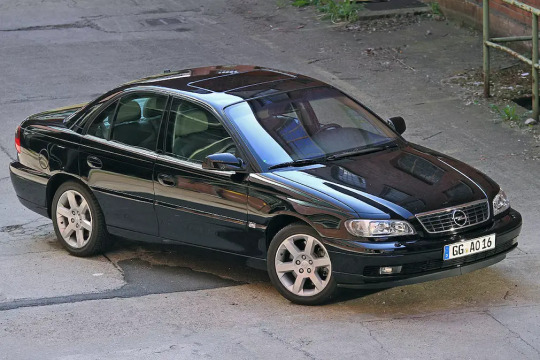
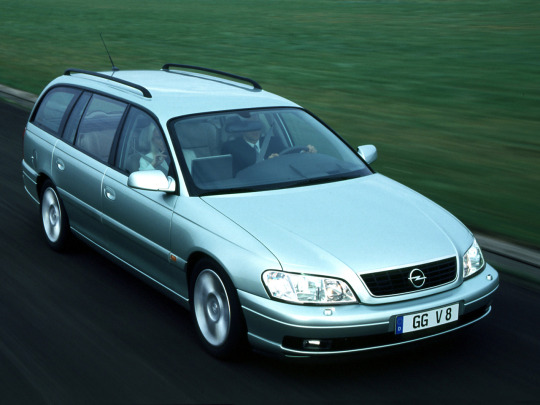
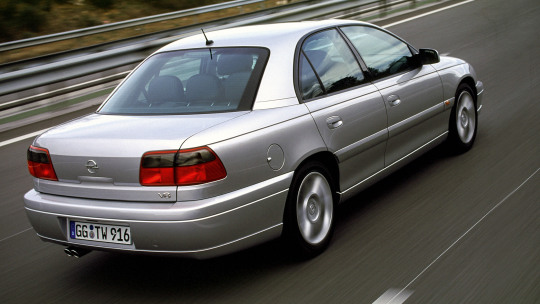

2000 Opel Omega V8
My tumblr-blogs: https://www.tumblr.com/blog/germancarssince1946 & https://www.tumblr.com/blog/frenchcarssince1946 & https://www.tumblr.com/blog/englishcarssince1946 & https://www.tumblr.com/blog/italiancarssince1946
1 note
·
View note
Text
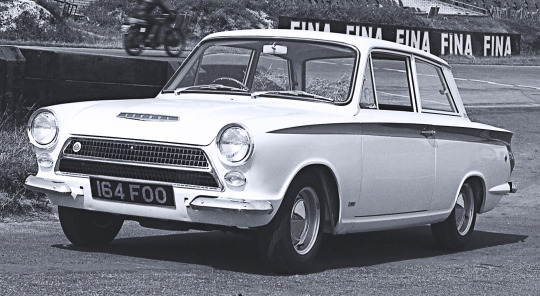
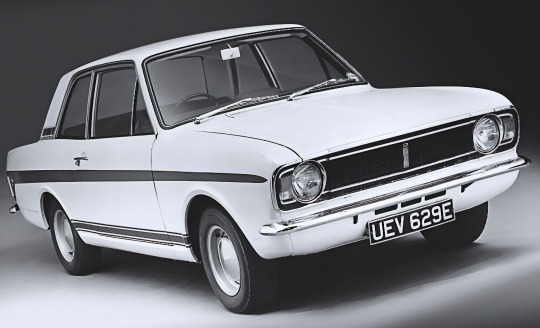

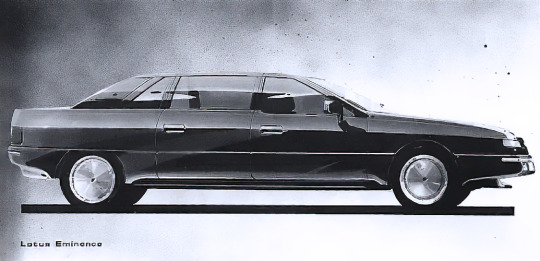
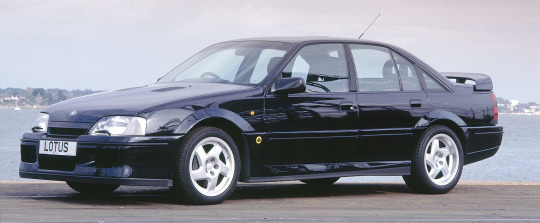
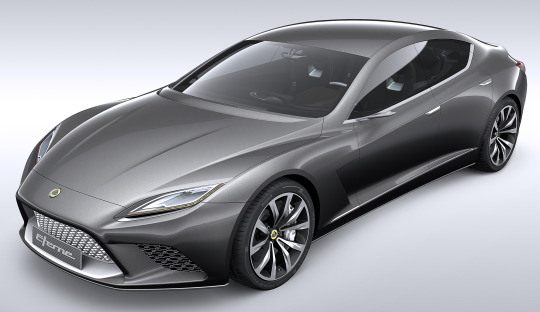

A BRIEF HISTORY OF LOTUS SALOONS
Lotus Cortina 1963-1970. Officially the Ford Consul Cortina developed by Lotus (Mk 1) and Ford Cortina Lotus (Mk II). Powered by a Ford engine with a Lotus developed DOHC. There were 3,306 Mark I and 4,093 Mark 2 Lotus Cortinas produced
Lotus Eminence Project 1980-1984. The earlier design was by Paolo Martin of Pininfarina, the later by William Towns but neither made it off the drawing board
Lotus Carlton/Omega 1990-1992. Officially the Vauxhall Lotus Carlton and Opel Omega Carlton. Lotus had developed a relationship with General Motors during the 1980s so the Omega A became the basis for a super saloon with the Opel 3.0 litre straight 6 24 valve DOHC engine taken out to 3.6 litres and fitted with twin turbochargers to make 377hp and what was, for a time, the world's fastest 4-door production saloon with a top speed of 176mph. Production amounted to 320 Carltons and 630 Omegas
Lotus Eterne Concept 2010. A non-functioning design study that was shown at the Paris Motor Show, was to be powered by Toyota 5.0 litre V8 or an F1 derived hybrid drivetrain and was to go on sale in 2015 but never did.
Lotus Emeya 2024. Their new electric super saloon
#Lotus#Lotus saloon#Lotus Cortina#Lotus Eminence#Lotus Carlton#Lotus Omega#Lotus Eterne#concept#prototype#auto history#sports saloon#1967#1990#2010#2024
138 notes
·
View notes
Photo

Opel Omega V8. An Omega which has V8 engine. It was to be almost produced.
Boston Car Service
0 notes
Text
Opel Omega mais rápido do mundo completa 30 anos

O Opel Omega já era um cruzador de estradas de primeira. Aerodinâmico, dotado de suspensão acertada e criado para andar nos trechos sem limite de velocidade das estradas , o sedã poderia até andar mais forte. Aí que entra a Lotus. O fabricante britânico sempre fez esportivos próprios, mas também é conhecido como fornecedor e projetista de modelos sob encomenda. Assim foi com o Carlton.
O Lotus Carlton, também vendido como Opel Lotus Omega, Lotus Omega e Vauxhall (braço britânico do grupo), foi lançado em 1990.
Por aqui vendido como Chevrolet, o Opel Omega tinha no máximo um motor de seis cilindros. Somente na Austrália foi associado a um V8. A Lotus poderia até ter optado por um oito em V, mas resolveu adotar o 3.0 de seis cilindros em linha.
Aquele mesmo usado nos primórdios do Omega por aqui, mas substituído nos mais novos pelo 4.1 do Opala, um propulsor veterano que foi refeito pela… Lotus.
Aí começou a parte da bruxaria. A cilindrada foi ampliada até chegar a 3,6 litros. Dois turbocompressores T25 da Garrett foram adicionados. Virabrequim e pistões passaram a ser forjados. Outras alterações foram feitas no sistema de gerenciamento e escape.
Se no Omega o propulsor rendia 165 cv, no Lotus o número subiu para 382 cv. O 3.6 24 válvulas gera torque de 57,9 kgfm a 4.200 rpm, mas é capaz de entregar força de V8 logo aos 2.000 giros.
O câmbio manual de seis marchas do Corvette ZR-1 foi utilizado para repassar tudo às rodas traseiras.
Read the full article
#automóveis#carros#Chevrolet#comprarcarro#comprarcarros#guarapari#Lotus#omega#OpelLotusOmega#rioverde#rioverdeautomóveis#veículos#vendercarro
0 notes
Photo

Holden Commodore (VN), 1988 A complete redesign of the Commodore resulted in the brand new VN launched in August 1988. Based on a hybrid of the European Opel Omega/Senator, the Commodore was now a full-size and could compete directly with Ford's new EA Falcon. Power came from a new Buick 3.8 litre V6, or the venerable 5 litre V8. Shown here is the Berlina, which came in just below the Calais in the Commodore range. #holden #vncommodore #vnberlina
6 notes
·
View notes
Photo

You’d think that a “smaller” car launched just before a fuel crisis would be a hit, but not always. The #BuickApollo, new in 1973, was offered for just 28 turbulent months. - It was perpetually caught in the middle of the rapidly changing circumstances around it - but when it was introduced, late for the 1973 model year on April 12, 1973, it was intended as a return to the “compact” market that Buick had gradually abandoned as the A-body Skylark/Special had grown larger in the 1960s. Indeed, some owners of aging 1960s Skylarks did trade them in on Apollos, but the goal was to shore up the bottom end of the Buick line as strong interest in compact domestics returned, like the Ford Maverick/Mercury Comet. Buick had Opels for import fighting, but kept asking for a smaller domestic car. Olds dealers, who didn’t even have Opels, clamored even louder. - The result of these requests was that GM applied the “Ventura” treatment for Buick and Olds. In 1971, it had created a variation of Chevrolet’s popular Nova for Pontiac - the Ventura. Now Buick and Olds got their versions - Apollo and Omega - for a clever acronym - the N-O-V-A cars. As with the Ventura, each was given unique stying elements out front and a unique rear fascia, with the Buick even getting the tradttional “ventiports.” Though all these cars were theoretically aimed at “economy” customers and all came with a base Chevy 250-cid six, all were offered with divisional V8s. At the time, you could get 350s V8 from all four divisions, but each was unique and the rationalization of engines that led to the infamous “Chevymobile” incident had yet to happen. - The Apollo was marketed as a smallish semi-luxury car despite the interior’s clear origins in the much cheaper Nova, and the 2-barrel and 4-barrel 350 was emphasized in the marketing. The latter made the lightweight Apollo coupe a fairly quick car and buyers liked it’s relatively nimble handling, but it’s 14-mpg thirst did nothing for it after OPEC - a 140-day supply stacked up by mid-1974. In 1975, all the Novas were totally restyled and the Skylark name returned, supplanting the Apollo coupes. The Apollo name was dropped from the sedan too for 1976. https://www.instagram.com/p/B7jN0JLlCR6/?igshid=lpers9o8l6bn
0 notes
Text
New Post has been published on Top Auto Magazine
New Post has been published on http://topautomag.com/cars/opel/2018-opel-insignia/
2018 Opel Insignia
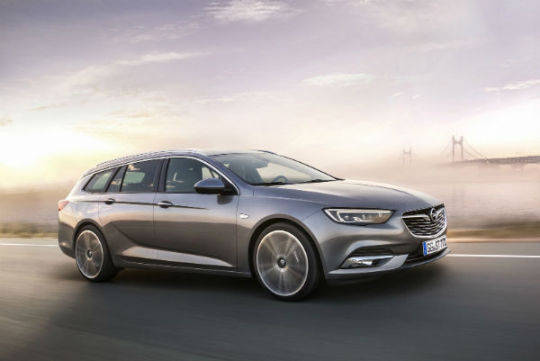
The 2018 Opel Insignia is a mid-range car produced by the Opel German car manufacturer since 2008, replacing the Opel Vectra. Opel Insignia was first revealed at the London Motor Show in the same year. In Continental Europe, it will be marketed under the Opel brand, in the United Kingdom traditionally under the Vauxhall brand and in China as Buick, while Holden plans to import to Australia and New Zealand.
The Opel Insignia was also the name for Opel’s 2003 concept, but it does not share anything with the new Insignia. The Insignia is the first car to produce with a camera coupled with a system for identifying traffic signs. The Insignia has won the prestigious title of the 2009 car, which is awarded by a panel of European motorists, where it defeated the Ford Fiesta by one point.
2018 Opel Insignia Concept
The 2018 Insignia Concept is a concept car unveiled by Opel in 2003 at the Geneva Motor Show 2003 in Switzerland. It was created by designers Mark Adams and Malcom Ward. This concept features a hydropneumatic suspension system, a pantograph mechanism like for sliding rear doors, LED lighting technology and a Corvette V8 engine with 344 PS. In early 2005, it was announced by Opel that this concept car with innovative technologies cannot be built in series because too expensive. This vehicle remained a pure concept study but it inspired the Opel GTC Concept in 2007.
2018 Opel Insignia Features
The Insignia is about 20 cm longer than its predecessor, the Opel Vectra C and had to go more on the side of the old Opel Omega. In addition, the Insignia has four-wheel drive. The Insignia is all new diesel engines. Opel takes part in this model from the 1.9 CDTI and switches on its own 2.0 CDTI engines. Initially, a newly developed 2.9 V6 250 hp CDTI diesel engine would be available for the Insignia. The engine was developed by the Italian VMotori and would be introduced into several Cadillac models but was removed early. The engine would only come in the Saab 9-5, which, like the Insignia, is based on the Epsilon II base.
The Insignia, like its predecessors, is built in Rüsselsheim, Germany. In the US and China, the Insignia is sold under the name of Buick Regal. On November 17, 2008, it was announced that the Opel Insignia was voted Car of the Year 2009, defeated the Ford Fiesta and enjoyed the Volkswagen Golf.
2018 Opel Insignia Design
The 2018 Insignia Grand Sport was presented for the first time at the 2017 Geneva Motor Show. It is wider and 5.5 cm bigger (4.90 m for the sedan and 4.99 for the Break SportsTourer) than its predecessor, Insignia I. This increase in size reflects the brand’s determination to showcase itself in the road segment thanks to an endowment and a manufacturing quality that is in progress compared to the previous generation.
Insignia inspired by the Monza concept car, the Insignia II features the new stylistic codes of Opel, in particular the new black grille highlighting the logo with a chrome-plated rim. The headlights incorporate wing-shaped LED daytime running lights and an Intel Linux matrix lighting system that can be adapted to road and traffic variations. The design elements of the car, such as the mirrors, have been designed to minimize wind intake to reduce aerodynamic noise and fuel consumption.
#gallery-23 margin: auto; #gallery-23 .gallery-item float: left; margin-top: 10px; text-align: center; width: 14%; #gallery-23 img border: 2px solid #cfcfcf; #gallery-23 .gallery-caption margin-left: 0; /* see gallery_shortcode() in wp-includes/media.php */
2018 Opel Insignia GSI
2018 Opel Insignia Interior
2018 Opel Insignia Wagon
Opel Insignia 2018 Grand Sport
Opel Insignia 2018 Interior
Opel Insignia 2018 OPC
2018 Opel Insignia Sports Tourer
On the inside, the instrument panel of the Insignia adopts a horizontal structure typical of Opel, in the spirit of the Astra. More modern, the interior offers equipment such as the head-up color display, an 8-inch touchscreen on high finishes as well as an induction smartphone charging system. In addition, Opel has focused on the work of AGR-certified seats to reduce fatigue during long journeys. This generation also benefits from a technological upgrade with the integration of safety equipment such as line crossing warning, adaptive cruise control, speed limit reading, blind spot monitoring and OnStar telematics system.
2018 Opel Insignia Engine
The new car is on sale in October 2008 with nine engines: 1.6-liter I4 petrol 115 hp, 1.8-liter I4 140 hp, 1.6-liter I4 turbo 180 hp, 2.0 l I4 a 220-hp direct-injection turbocharger and four 2.0-liter CDTi I4 diesel engines, three of which will feature a 110, 130 and 160 hp turbocharger, and one with two 190 horsepower turbochargers. The flagship of the model will feature a 2.8-liter gasoline engine with 260 hp V6 turbo.All engines meet strict Euro 5 emission standards and come with the six-speed manual and automatic gearboxes.
Insignia Sports Tourer
The Sports Tourer variant is 8 cm longer than the sedan variant (4.99 m), and has dimensions comparable to the top class vehicles such as the BMW 5 Series Break, the Audi A6 Avant, and the Mercedes E-Class Estate. The volume of the trunk behind them. Stylistic originality, the stern is connected to the front by a chromed rod that starts from the rear headlights and extends along the windows to the front cover. Resolutely original, the station wagon and the sedan are aimed at the high-end market of roads.
The Insignia Country Tourer
The Insignia Country Tourer is officially unveiled in April 2017, is based on the Sports Tourer model, it is distinguished by an increased ground clearance, with the addition of protective clogs and black wheel arches to create a baroude look. Although it can be equipped with an all-wheel-drive system with traction control, this version is limited to two-wheel drive on the basic engines for 2018 Opel Insignia model.

2018 Opel Insignia Sports Tourer
0 notes
Text
New Post has been published on Top Auto Magazine
New Post has been published on http://topautomag.com/cars/opel/2018-opel-insignia/
2018 Opel Insignia

The 2018 Opel Insignia is a mid-range car produced by the Opel German car manufacturer since 2008, replacing the Opel Vectra. Opel Insignia was first revealed at the London Motor Show in the same year. In Continental Europe, it will be marketed under the Opel brand, in the United Kingdom traditionally under the Vauxhall brand and in China as Buick, while Holden plans to import to Australia and New Zealand.
The Opel Insignia was also the name for Opel’s 2003 concept, but it does not share anything with the new Insignia. The Insignia is the first car to produce with a camera coupled with a system for identifying traffic signs. The Insignia has won the prestigious title of the 2009 car, which is awarded by a panel of European motorists, where it defeated the Ford Fiesta by one point.
2018 Opel Insignia Concept
The 2018 Insignia Concept is a concept car unveiled by Opel in 2003 at the Geneva Motor Show 2003 in Switzerland. It was created by designers Mark Adams and Malcom Ward. This concept features a hydropneumatic suspension system, a pantograph mechanism like for sliding rear doors, LED lighting technology and a Corvette V8 engine with 344 PS. In early 2005, it was announced by Opel that this concept car with innovative technologies cannot be built in series because too expensive. This vehicle remained a pure concept study but it inspired the Opel GTC Concept in 2007.
2018 Opel Insignia Features
The Insignia is about 20 cm longer than its predecessor, the Opel Vectra C and had to go more on the side of the old Opel Omega. In addition, the Insignia has four-wheel drive. The Insignia is all new diesel engines. Opel takes part in this model from the 1.9 CDTI and switches on its own 2.0 CDTI engines. Initially, a newly developed 2.9 V6 250 hp CDTI diesel engine would be available for the Insignia. The engine was developed by the Italian VMotori and would be introduced into several Cadillac models but was removed early. The engine would only come in the Saab 9-5, which, like the Insignia, is based on the Epsilon II base.
The Insignia, like its predecessors, is built in Rüsselsheim, Germany. In the US and China, the Insignia is sold under the name of Buick Regal. On November 17, 2008, it was announced that the Opel Insignia was voted Car of the Year 2009, defeated the Ford Fiesta and enjoyed the Volkswagen Golf.
2018 Opel Insignia Design
The 2018 Insignia Grand Sport was presented for the first time at the 2017 Geneva Motor Show. It is wider and 5.5 cm bigger (4.90 m for the sedan and 4.99 for the Break SportsTourer) than its predecessor, Insignia I. This increase in size reflects the brand’s determination to showcase itself in the road segment thanks to an endowment and a manufacturing quality that is in progress compared to the previous generation.
Insignia inspired by the Monza concept car, the Insignia II features the new stylistic codes of Opel, in particular the new black grille highlighting the logo with a chrome-plated rim. The headlights incorporate wing-shaped LED daytime running lights and an Intel Linux matrix lighting system that can be adapted to road and traffic variations. The design elements of the car, such as the mirrors, have been designed to minimize wind intake to reduce aerodynamic noise and fuel consumption.
#gallery-22 margin: auto; #gallery-22 .gallery-item float: left; margin-top: 10px; text-align: center; width: 14%; #gallery-22 img border: 2px solid #cfcfcf; #gallery-22 .gallery-caption margin-left: 0; /* see gallery_shortcode() in wp-includes/media.php */
2018 Opel Insignia GSI
2018 Opel Insignia Interior
2018 Opel Insignia Wagon
Opel Insignia 2018 Grand Sport
Opel Insignia 2018 Interior
Opel Insignia 2018 OPC
2018 Opel Insignia Sports Tourer
On the inside, the instrument panel of the Insignia adopts a horizontal structure typical of Opel, in the spirit of the Astra. More modern, the interior offers equipment such as the head-up color display, an 8-inch touchscreen on high finishes as well as an induction smartphone charging system. In addition, Opel has focused on the work of AGR-certified seats to reduce fatigue during long journeys. This generation also benefits from a technological upgrade with the integration of safety equipment such as line crossing warning, adaptive cruise control, speed limit reading, blind spot monitoring and OnStar telematics system.
2018 Opel Insignia Engine
The new car is on sale in October 2008 with nine engines: 1.6-liter I4 petrol 115 hp, 1.8-liter I4 140 hp, 1.6-liter I4 turbo 180 hp, 2.0 l I4 a 220-hp direct-injection turbocharger and four 2.0-liter CDTi I4 diesel engines, three of which will feature a 110, 130 and 160 hp turbocharger, and one with two 190 horsepower turbochargers. The flagship of the model will feature a 2.8-liter gasoline engine with 260 hp V6 turbo.All engines meet strict Euro 5 emission standards and come with the six-speed manual and automatic gearboxes.
Insignia Sports Tourer
The Sports Tourer variant is 8 cm longer than the sedan variant (4.99 m), and has dimensions comparable to the top class vehicles such as the BMW 5 Series Break, the Audi A6 Avant, and the Mercedes E-Class Estate. The volume of the trunk behind them. Stylistic originality, the stern is connected to the front by a chromed rod that starts from the rear headlights and extends along the windows to the front cover. Resolutely original, the station wagon and the sedan are aimed at the high-end market of roads.
The Insignia Country Tourer
The Insignia Country Tourer is officially unveiled in April 2017, is based on the Sports Tourer model, it is distinguished by an increased ground clearance, with the addition of protective clogs and black wheel arches to create a baroude look. Although it can be equipped with an all-wheel-drive system with traction control, this version is limited to two-wheel drive on the basic engines for 2018 Opel Insignia model.

2018 Opel Insignia Sports Tourer
0 notes
Text
Conheça a história da Holden, uma das fabricantes mais antigas do mundo
A australiana Holden pode ser pouco conhecida no Brasil, mas é uma das fabricantes de automóveis mais antigas do mundo. A empresa iniciou sua história em 1856 fabricando selas para cavalos, mas já em 1908 começou a trabalhar com automóveis.
Inscreva-se no canal do Jornal do Carro no YouTube
Veja vídeos de testes de carros e motos, lançamentos, panoramas, análises, entrevistas e o que acontece no mundo automotivo em outros países!
Inscrever-se
A Holden começou fazendo reparos nos poucos carros que circulavam na Austrália, e passou a produzir carros inteiros em 1917, durante a Primeira Guerra. Já em 1923, a Holden chegou a montar carrocerias para a Ford australiana, que já era estabelecida na época. Os Ford T australianos usavam carrocerias Holden.
No entanto poco depois, a Holden se tornaria fornecedora exclusiva de carrocerias para a General Motors, que se instalou no país em 1926. Logo em 1931, a empresa seria comprada pela GM, dando início à história da marca nos moldes modernos.
youtube
A empresa foi uma das responsáveis pela produção do primeiro carro desenhado na Austrália. A empreitada envolveu até conflitos com a própria GM, que preferia que o primeiro carro australiano usasse como base um desenho americano. O veículo, chamado apenas de Holden, foi lançado em 1948.
Sucesso absoluto
Nas décadas seguintes, a marca dominaria o mercado local, com modelos exclusivos para a Austrália. O estilo da Holden misturava um visual menos exagerado do que os clássicos GM americanos, mas trazia motores de grande capacidade, com V8 acima dos 5,0 litros. A marca tinha também forte conexão com a Vauxhall, o braço inglês da General Motors.
A Holden também vendeu na Austrália modelos de outras marcas, mas que ganhavam seus emblemas. Modelos da Isuzu, Opel e até de Suzuki e Nissan ganharam emblemas da Holden e algumas mudanças visuais para serem vendidos por lá.
Na diversificada gama da Holden, a marca teve também as clássicas Utes, picapes fabricadas sobre a plataforma de sedãs. Esse tipo de carro é tipicamente australiano, e as Utes locais tinham até versões esportivas, com motores V8 e tração traseira.
A Holden também participou de corridas, como a icônica Bathurst, e foi uma das maiores empresas do país. E apesar de fazer parte da General Motors, trazia várias peculiaridades. Os motores de seis cilindros em linha usados até meados dos anos 80 eram projetos próprios, diferentes dos usados pela GM nos Estados Unidos, por exemplo.
Além disso, quando a marca precisou substituí-los, devido à exigências da legislação australiana, a marca comprou propulsores “seis em linha” da Nissan. Assim, há versões do Commodore, um de seus carros mais conhecidos, com o mesmo conjunto mecânico dos Nissan Skyline. Há até variantes turbinadas.
Holden no Brasil
Da Austrália, os Holden foram vendidos em várias partes do mundo, incluindo o Brasil. E por aqui, o único Holden a ser vendido chegou com o pomposo nome de Chevrolet Omega. O modelo, originalmente conhecido como Holden Commodore, chegou em 1998 com a difícil missão de substituir o Omega nacional.
Curiosamente, o Omega teve uma nova geração na Europa, de onde veio o projeto do modelo nacional, mas a Chevrolet optou por trazer o sedã australiano e rebatizá-lo, em vez de trazer o “orginal” alemão. O Omega australiano, como o modelo ficou conhecido, nunca teve o mesmo carisma da primeira geração e não fez o mesmo sucesso. O projeto, aliás, foi inspirado no Omega alemão, mas o modelo australiano era mais largo e comprido. Também chegou a ter motores V8, nunca oferecidos no Europeu.
As origens australianas trouxeram algumas particularidades aos Omega importados. Itens como o freio de estacionamento do lado do passageiro e até o console levemente direcionado pro lado direito do carro chamaram atenção.
Caminho para o fim
Em 2017, o Commodore saiu de linha e encerrou uma longa linhagem de modelos originalmente australianos. A marca foi definhando até que no início deste ano a GM anunciou o fim das operações, marcado para 2021. Os modelos ainda à venda já eram importados de outros países, como da Tailândia. Nenhum Holden era produzido mais na Austrália.
Apesar da participação tímida por aqui, o Commodore era um dos carros mais vendidos da Austrália.
https://jornaldocarro.estadao.com.br/fanaticos/conheca-a-historia-da-holden-uma-das-fabricantes/ visto pela primeira vez em https://jornaldocarro.estadao.com.br
0 notes
Text
Conheça a história da Holden, uma das fabricantes mais antigas do mundo
A australiana Holden pode ser pouco conhecida no Brasil, mas é uma das fabricantes de automóveis mais antigas do mundo. A empresa iniciou sua história em 1856 fabricando selas para cavalos, mas já em 1908 começou a trabalhar com automóveis.
Inscreva-se no canal do Jornal do Carro no YouTube
Veja vídeos de testes de carros e motos, lançamentos, panoramas, análises, entrevistas e o que acontece no mundo automotivo em outros países!
Inscrever-se
A Holden começou fazendo reparos nos poucos carros que circulavam na Austrália, e passou a produzir carros inteiros em 1917, durante a Primeira Guerra. Já em 1923, a Holden chegou a montar carrocerias para a Ford australiana, que já era estabelecida na época. Os Ford T australianos usavam carrocerias Holden.
No entanto poco depois, a Holden se tornaria fornecedora exclusiva de carrocerias para a General Motors, que se instalou no país em 1926. Logo em 1931, a empresa seria comprada pela GM, dando início à história da marca nos moldes modernos.
youtube
A empresa foi uma das responsáveis pela produção do primeiro carro desenhado na Austrália. A empreitada envolveu até conflitos com a própria GM, que preferia que o primeiro carro australiano usasse como base um desenho americano. O veículo, chamado apenas de Holden, foi lançado em 1948.
Sucesso absoluto
Nas décadas seguintes, a marca dominaria o mercado local, com modelos exclusivos para a Austrália. O estilo da Holden misturava um visual menos exagerado do que os clássicos GM americanos, mas trazia motores de grande capacidade, com V8 acima dos 5,0 litros. A marca tinha também forte conexão com a Vauxhall, o braço inglês da General Motors.
A Holden também vendeu na Austrália modelos de outras marcas, mas que ganhavam seus emblemas. Modelos da Isuzu, Opel e até de Suzuki e Nissan ganharam emblemas da Holden e algumas mudanças visuais para serem vendidos por lá.
Na diversificada gama da Holden, a marca teve também as clássicas Utes, picapes fabricadas sobre a plataforma de sedãs. Esse tipo de carro é tipicamente australiano, e as Utes locais tinham até versões esportivas, com motores V8 e tração traseira.
A Holden também participou de corridas, como a icônica Bathurst, e foi uma das maiores empresas do país. E apesar de fazer parte da General Motors, trazia várias peculiaridades. Os motores de seis cilindros em linha usados até meados dos anos 80 eram projetos próprios, diferentes dos usados pela GM nos Estados Unidos, por exemplo.
Além disso, quando a marca precisou substituí-los, devido à exigências da legislação australiana, a marca comprou propulsores “seis em linha” da Nissan. Assim, há versões do Commodore, um de seus carros mais conhecidos, com o mesmo conjunto mecânico dos Nissan Skyline. Há até variantes turbinadas.
Holden no Brasil
Da Austrália, os Holden foram vendidos em várias partes do mundo, incluindo o Brasil. E por aqui, o único Holden a ser vendido chegou com o pomposo nome de Chevrolet Omega. O modelo, originalmente conhecido como Holden Commodore, chegou em 1998 com a difícil missão de substituir o Omega nacional.
Curiosamente, o Omega teve uma nova geração na Europa, de onde veio o projeto do modelo nacional, mas a Chevrolet optou por trazer o sedã australiano e rebatizá-lo, em vez de trazer o “orginal” alemão. O Omega australiano, como o modelo ficou conhecido, nunca teve o mesmo carisma da primeira geração e não fez o mesmo sucesso. O projeto, aliás, foi inspirado no Omega alemão, mas o modelo australiano era mais largo e comprido. Também chegou a ter motores V8, nunca oferecidos no Europeu.
As origens australianas trouxeram algumas particularidades aos Omega importados. Itens como o freio de estacionamento do lado do passageiro e até o console levemente direcionado pro lado direito do carro chamaram atenção.
Caminho para o fim
Em 2017, o Commodore saiu de linha e encerrou uma longa linhagem de modelos originalmente australianos. A marca foi definhando até que no início deste ano a GM anunciou o fim das operações, marcado para 2021. Os modelos ainda à venda já eram importados de outros países, como da Tailândia. Nenhum Holden era produzido mais na Austrália.
Apesar da participação tímida por aqui, o Commodore era um dos carros mais vendidos da Austrália.
Conheça a história da Holden, uma das fabricantes mais antigas do mundo publicado primeiro em https://https://jornaldocarro.estadao.com.br
0 notes
Text
Vectra GSi: o sedã esportivo que abalou nosso mercado nos anos 90
Era o final de 1993. Junto com o Vectra GSi temos o Brasil há menos de um ano de se tornar tetracampeão de futebol e Ayrton Senna ainda surpreendendo em seu fraco McLaren Ford V8. Nessa época, a GM iniciou uma nova fase por aqui.
Fazia poucos anos que a importação de carros estava liberada e o consumidor brasileiro não precisava mais sonhar com os carros impossíveis das revistas especializadas. Agora, ele poderia ter um Opel aqui, embora com a gravata Chevrolet.
Um dos muitos alemães que desembarcaram por aqui, oriundos de Rüsselsheim, era o Chevrolet Vectra. O sedã médio europeu chegou para ficar entre o nosso saudoso Monza e outro germânico, já naturalizado, o Omega.
Na ânsia de atender os compradores que queriam entrar na nova era automotiva do Brasil, a GMB trouxe logo de cara três versões do Vectra, sendo que duas eram equipadas com motor 2.0 8V (GLS e CD).
Contudo, o suprassumo ficava para o Vectra GSi, que era a opção de performance do sedã médio alemão e trazia de forma exclusiva o motor Família II 2.0 16V.
Mais potente e rápido que as demais opções, o Vectra GSi foi uma alternativa agradável em um momento de boom do mercado, onde as novidades surgiam aos montes no mercado nacional.
Vectra GSi
O Vectra GSi não era um carro relativamente novo no mercado europeu, tendo sido lançado em 1988. Sucessor do Ascona (Monza alemão), o modelo recebera motor V6 apenas alguns meses antes de chegar ao Brasil.
Por aqui, se o GLS era mais racional e o CD tinha proposta mais luxuosa, o GSi era aquele que elevava a emoção ao máximo com a performance de um esportivo.
Não por acaso, a designação na Opel para GSi é de carro esportivo e foi assim até a ascensão da OPC. Então, para corresponder a isso, o Vectra GSi vinha para realmente botar lenha na fogueira.
Além do motor forte, trazia ainda transmissão manual de cinco marchas para que o condutor pudesse “puxar” tudo o que o carro tinha direito, tornando-o um carro realmente gostoso de dirigir, porém, havia alguns pormenores.
Objeto de desejo de muitos consumidores, o Vectra GSi chegou secretamente com prazo de validade. O motivo é que a chegada do sedã importado era o prenúncio de sua nacionalização, já na segunda (e sofisticada) geração.
Raro nos dias de hoje, o Vectra GSi usado e conservado pode custar R$ 30.000 sem muito esforço. Ou seja, ainda é um carro que desperta a paixão pelo saudosismo, purismo e esportividade que hoje não temos mais.
O GSi durou muito pouco pelo que oferecia, sendo exatos 30 meses, em que aqueles que podiam pagar seu alto preço, tiveram a chance de te-lo na garagem, alguns para preservação.
Infelizmente, com a chegada da nova geração, o Vectra GSi não teve espaço no portfólio da Chevrolet e ficou sendo um produto para apreciação apenas dos europeus e outros que podiam compra-lo em outras regiões.
Vectra GSi – Estilo
O Vectra GSi era um “sleeper car”, não aparentando visualmente o que realmente podia fazer. Discreto, o modelo chegou sem perfumarias, que os alemães evidentemente não gostam.
Como um Opel, o GSi era um esportivo para chamar atenção apenas quando arrancasse rápido e não por estética, algo que os italianos – mais emocionais – apreciam. Como alemão, ele tinha de ser discreto e funcional.
Parcialmente dotado de linhas arredondadas na frente, o Vectra GSi tinha formas atraentes, mesmo não querendo ir por esse caminho “visual”. O modelo apresentava o logotipo Chevrolet dentro de um círculo, que era da Opel.
Isso facilitava a troca de emblemas para sua comercialização em países onde, infelizmente, a marca alemã não estava presente, como aqui. A grade preta era emoldurada por um acabamento na cor do carro.
Os faróis duplos retangulares tinha os piscas separados, além de lentes claras. O Vectra GSi tinha molduras pretas que envolviam toda a carroceria, englobando os para-choques e as laterais do carro.
Na frente, abaixo delas, havia um protetor com linhas fluidas e dois faróis de neblina, que ficavam numa moldura que também servia de grade inferior, tendo esta apenas um friso na cor do carro.
Esse para-choque era exclusivo do Vectra GSi e tinha ainda um spoiler discreto na base. Nas laterais, o sedã esportivo vinha com saias laterais bem proeminentes, bem como badge “2.0 16V” para enaltecer o que havia debaixo do capô.
Os retrovisores eram embutidos nas portas, que tinham ainda maçanetas igualmente integradas à carroceria, reduzindo assim o coeficiente aerodinâmico. Estas eram pretas e se destacavam no visual, assim como as colunas pretas.
No Vectra GSi de cor branca, um dos mais desejados – se não for o mais – essas partes em preto se sobressaíam bem mais. Com teto solar elétrico, o sedã não tinha mais nada sobre a cabine.
A antena do sistema de áudio era elétrica e ficava no lado esquerdo do porta-malas. Este vinha com um pequeno defletor de ar na cor do carro, sendo praticamente integrado à tampa.
As lanternas quase quadradas eram escurecidas e cortadas pela tampa do porta-malas, sendo fixadas num fundo preto que dominava a traseira, que era o que mais destacava o Vectra GSi das demais versões.
O para-choque tinha um spoiler estranhamente muito pronunciado, diferente do que se espera em um carro esportivo. Os badges “Vectra GSi” de um lado e “Chevrolet” do outro era adesivados na carroceria.
O logo da gravata com fundo preto ficava ao centro, mas estava anos-luz de distância de qualquer proposta “Midnight” de hoje em dia. Já o escapamento do Vectra GSi era discreto em sua ponteira, oculta sob o para-choque traseiro.
Para diferencia-lo das versões GLS e CD, a GM adicionou rodas aro 15 polegadas com liga leve inteiriça, tendo apenas cinco entradas de ar em forma de pétalas e uma capa protetora dos parafusos. Seus pneus eram 195/60 R15.
No interior, o Vectra GSi exibia um ambiente sóbrio, não apresentando qualquer característica que o levasse a ser um esportivo. O volante, no entanto, era o mesmo do Calibra, tendo quatro raios e ajuste em altura.
Com 37 cm de diâmetro, ele tinha acabamento em couro e aparência elegante, porém, longe da proposta do carro. O painel era todo preto, tendo cluster analógico com conta-giros em meia-lua e velocímetro centralizado.
Sem airbags, o Vectra GSi tinha um “buraco” no lugar do mesmo para o passageiro, que servia de porta-objetos. O porta-luvas refrigerado e com porta-copos ficava logo abaixo.
Os difusores de ar eram bem elevados, enquanto o ar condicionado ainda mantinha alavancas para ajuste ao lado do computador de bordo de 7 funções, num diminuto display, porém, bem chamativo.
Este vinha com relógio, consumo médio e instantâneo, autonomia, velocidade média, cronômetro e temperatura externa.
No caso do sistema de áudio, chamava atenção dois aparelhos. Um era o rádio toca-fitas 1din na parte inferior do console central, tendo logo abaixo um player de CD com display digital e também num formato 1din.
Mais abaixo, um cinzeiro retrátil com acendedor de cigarros embutido, além da alavanca de câmbio em couro.
O freio de mão junto dos botões do computador de bordo. Embora os espelhos retrovisores externos fossem ajustáveis na porta do motorista, os vidros não eram.
Os comandos dos vidros ficavam entre os bancos dianteiros, tendo botões individuais. Entretanto, as portas traseiras vinham com seus acionadores nas portas. Já as travas eram por pinos no topo das mesmas.
O revestimento dos bancos era em veludo e não em couro, algo que pode ser visto em muitos Vectra GSi usados. Os apoios de cabeça tinham elementos vazados, enquanto o banco do motorista tinha ajuste lombar.
As portas tinham acabamento em veludo na parte central e apliques imitando madeira na parte superior. O Vectra GSi ainda oferecia porta-cassetes (5) entre os bancos dianteiros, além de apoio de braço central apenas atrás.
Equipado com direção hidráulica, o Vectra GSi oferecia muito conforto a bordo. No porta-malas, cabiam 388 litros. Tudo isso movido por um propulsor realmente capaz.
Vectra GSi – Motor
O Vectra GSi não tinha apenas um motor mais potente colocado simplesmente dentro do cofre, mas uma preparação diferenciada como um todo para que o sedã realmente andasse como os alemães exigem.
Assim, o propulsor C20XE chegava com bloco de ferro fundido e cabeçote de alumínio com 16 válvulas em duplo comando de acionamento por correia dentada.
Ele era parte da Família II da GM e tinha 1998 cm3 de volume, trabalhando com taxa de compressão de 10,5:1. Entregando 150 cavalos a 6.000 rpm e 20 kgfm a 4.600 rpm, ele tinha injeção eletrônica sequencial Bosch Motronic.
O C20XE era bem robusto para atingir altas rotações, tendo virabrequim reforçado, pistões forjados, válvulas de escape refrigeradas à sódio, comandos com árvores ocas para reduzir peso e inércia, catalisador e sensor de oxigênio.
A injeção Bosch Motronic 2.8 tinha dois corpos de borboletas para aspiração em alta e baixa rotação, tendo ainda cárter de alumínio, coletor de escape em aço inox 4:2 e radiador de óleo.
Aqui, o Vectra GSi ia de 0 a 100 km/h em 8,5 segundos e tinha máxima de 210 km/h. Porém, as revistas especializadas chegavam a 215 km/h. Na Europa, o esportivo era mais veloz e atingia 217 km/h.
Com 4,432 m de comprimento, 1,706 m de largura, 1,370 m de altura e 2,600 m de entre eixos, o Vectra GSi pesava 1.235 kg, tendo suspensão dianteira McPherson e traseira por eixo de torção. Os freios eram a disco nas quatro rodas, sem ABS.
O consumo era de 10,6 km/l na cidade e 13,5 km/l na estrada, nada mal para um sedã médio da década de 1990. Para efeito de comparação, hoje o Polo GTS faz 11/13,7 km/l, respectivamente, sendo apenas 0,1 segundo mais rápido.
Com tanque de 57 litros, o Vectra GSi teoricamente podia rodar quase 770 km. Foi um bom carro, mas viveu pouco por aqui. No tempo em que esteve, não recebeu alterações, entrando assim para o rol dos bons carros esportivos dos anos 90.
youtube
© Noticias Automotivas. A notícia Vectra GSi: o sedã esportivo que abalou nosso mercado nos anos 90 é um conteúdo original do site Notícias Automotivas.
Vectra GSi: o sedã esportivo que abalou nosso mercado nos anos 90 publicado primeiro em https://www.noticiasautomotivas.com.br
0 notes
Photo



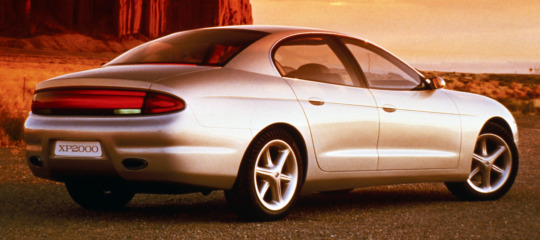
Buick XP2000 Concept, 1995. A rear-wheel-drive sedan that showcased advanced technology (for the period) including satellite navigation and a remote keyless fob that positioned the car’s seats, climate controls and suspension settings to specific driver’s settings. It was powered by a 5 litre V8 and used the same GM V-platform as the Opel Omega and Holden VT Commodore.
122 notes
·
View notes
Text
1 of 27 Ever Made: The Intermeccanica Indra Fastback Coupé
The Intermeccanica Indra was one of the most successful models from the Italian/American/Canadian company founded by the husband and wife team of Frank and Paula Reisner in Torino, Italy in 1959.
Many of the cars built by Intermeccanica including the Italia/Torino, the Apollo, the Griffith GT, the Omega, and the Indra featured beautiful Italian-themed styling with reliable and inexpensive to maintain American V8 engines and running gear.
Unlike many small volume automakers, Intermeccanica focussed largely on steel bodied cars, built by hand in Italy by skilled artisans. Most of the chassis and bodies were made in Italy before bering shipped to the USA to have their engines and drivetrains fitted, then delivered to clients who mostly lived in the USA.
Intermeccanica – Construzione Automobili Intermeccanica
Intermeccanica has a truly remarkable and largely untold story of survival, they started out making tuning kits for engines in Italy including carburettor kits, exhaust headers, and performance cams before building a small number of racing cars.
Small volume production of road-going sports cars came next, these were funded by a variety of entrepreneurs and included a surprising number of interesting cars that were built from the 1960s into the ’70s.
By the mid-1970s the company had relocated to California and began to build Porsche replicas, over the intervening years they developed a series of Speedster replicas and other cars including a recent all-electric model called the e-Roadster.
The company is now run by Frank and Paula’s son Henry Reisner who has been responsible for bringing Intermeccanica into the 21st century, including the development of the all-electric e-Roadster.
Some still hold out hope that Intermeccanica will one day return cars like the Italia or the Indra to production, however it seems clear that the only reason the company survived so long is because of the hugely popular replica model line.
The Intermeccanica Indra
The Intermeccanica Indra was built from 1971 until 1974, approximately 127 cars were made in three major model iterations – 60 convertibles, 40 coupes, and 27 2+2s.
Most of the Indras were powered by either 327 or 350 cu. in. Chevrolet V8 engines with either manual or automatic transmissions, though some were fitted with straight-6 Opel engines for the German market and sold through the official Opel dealer network.
The Indra was first introduced at the 1973 New York Automobile Show, the reception was overwhelmingly positive and many orders were taken at the show. A dealer network was set up, and things were looking good for Intermeccanica.
Each Indra has a handmade steel body styled by Franco Scaglionion a chassis designed specifically for the model, independent front suspension is fitted with DeDion rear suspension, they all used ZF recirculating ball power steering, and they featured four wheel vented power disc brakes, power steering, electric windows and air conditioning as an option.
Sadly, General Motors changed their policy of supplying engines and parts, they also instructed their subsidiary Opel to cease supplying engines to independent manufacturers. This was an almost critical blow for Intermeccanica, fortunately 127 cars were built before the engine supply dried up.
The Indra would be the last of the production cars from Intermeccanica with its own in-house design, today it’s remembered as one of their most beautiful cars and the interest among collectors has been climbing steadily.
The Intermeccanica Indra you see here is a 1973 model fitted with a Chevrolet Corvette 327 cu. in. (5.4 litre) V8 mated to a TH400 automatic transmission.
The car belonged to owners in Switzerland and France before being bought by its current owner in the UK, and it comes with copies of the lapsed French registration along with the UK V5C registration certificate, the UK MoT to March 2019, and receipts for maintenance and parts through the previous 7 or 8 years of ownership.
It’s due to roll across the auction block with Bonhams on the 30th of June with an estimated price of €60,000 to €90,000. If you’d like to read more or register to bid you can click here to visit the listing
Images courtesy of Bonhams
The post 1 of 27 Ever Made: The Intermeccanica Indra Fastback Coupé appeared first on Silodrome.
source https://silodrome.com/intermeccanica-indra/
0 notes
Photo

Vauxhall/Opel Omega V6,2.5 3.0 10mm Formula Power RACE PERFORMANCE HT Lead Set. IMPROVING ENGINE EFFICIENCY SINCE 1998. UPGRADE FOR IMPROVED PERFORMANCE & RELIABILITY. FORMULA POWER 10mmRACEPERFORMANCE HT LEAD SETS. Made to BS.EN.ISO 3808. Standard. DELIVERS MORE POWER TO WHERE ITS NEEDED Really feel the Difference. Extreme insulation property-well in excess of 50KV Very low resistance which gives excellent spark quality. Stainless steel wire wound conduit for longevity. EPDM silicone inner insulation. High temp silicone plug boots with grip ribs. Oil, Ozone,fuel and heat resistant. Specific OHM resistance for hotter spark at plug. Opel/Vauxhall OMEGA 2.5, V6 94>00 Opel/Vauxhall 3.0 V6, 94>01 Coil Pack Models. RED, BLUE AND BLACK CABLE AVAILABLE. PLEASE CHOOSE COLOUR WHEN PAYING VIA PAYPAL IN MESSAGE BOX. OTHERWISE WE WILL SEND COLOUR WE HAVE IN STOCK. Please Quote FP376 when ordering. In todays stop/start driving conditions, engines build up carbon deposits very quickly due to incomplete burning of the fuel. The 10mm Ignition leads helps dissolve excess carbon, due to the stronger spark giving a better burn, so the engine runs more efficiently and oil stays cleaner for longer. Guarantees all the power from your coil or coil pack reaches your plugs. Please see Vauxhall VVOC forum for recomendations. Can be made for most cars including Kit Cars. Quote from AM Quarterly, the Aston Martin club Magazine " The ultimate cable for spark efficiency for the Aston Range. "A typical energy drop is an amazing 1-2% compaired to 15-18%." The leads are also exceptionally efficient with LPG/GPL vehicles, due to producing a stronger spark, so more gas burnt, so producing MORE MILES PER GALLON. V8 owners reporting 15-20% saving. Do not confuse these leads with standard leads, they are far superior. All leads are KV tested before leaving our factory. The leads are guaranteed for 10 years if fitted with care and removed with care All leads are made to measure, not universal type. MADE IN ENGLAND. SOLD WORLDWIDE. SEE OUR SHOP FOR FUEL CAT PRE COMBUSTION FUEL CATALYSTS ESTABLISHED 1988 SAVES FUEL-LOWERS EMISSIONS-LEADED TO UNLEADED CONVERSION. STOPS FUEL GOING STALE/GUMMING DURING STORAGE. Please look at my feedback which 99% are for leads. If there is a problem with your purchase or you are not happy please contact me immediately, so i can solve the problem. If you cannot see the set you want,please email us, as we have many sets not listed as yet, http://nemb.it/p/ryjBWmubKiG Published using Nembol
0 notes
Photo
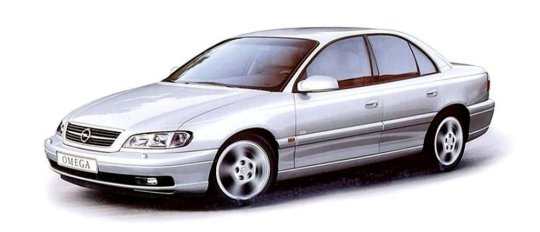
Opel Omega II 1999-2003
I4-engine/dohc/16v: 1998 ccm: 136 hp
I4-engine/dohc/16v: 2198 ccm: 144 hp
V6-engine/dohc/24v: 2597 ccm: 180 hp
V6-engine/dohc/24v: 2962 ccm: 211 hp
V6-engine/dohc/24v: 3175 ccm: 218 hp
V8-engine/ohv: 5665 ccm: 315 hp
I4-diesel-engine/dohc/16v/turbo: 1995 ccm: 101 hp
I4-diesel-engine/dohc/16v/turbo: 2171 ccm: 125 hp
V6-diesel-engine/ohc/turbo: 2497 ccm: 131 hp
0 notes
Text




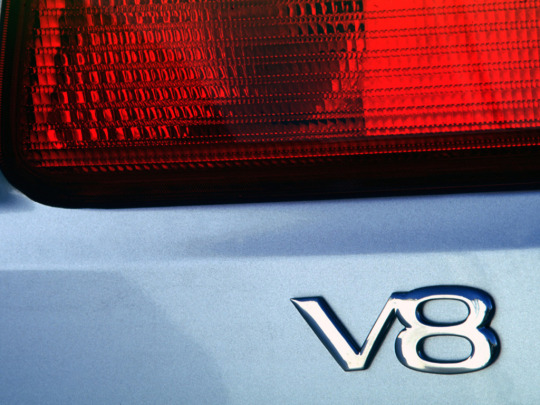

Opel Omega V8, 2000. Shown at the 70th Geneva Motor Show, a B2 series Omega powered by a GM LS1 V8 engine as used in the Corvette. Plans were announced for the V8 Omega to go on sale in Autumn 2000, 32 saloon and station wagon prototypes were built but the cars never made it into Opel's showrooms. There were concerns that the engine might not be vollgasfest ("Full throttle resistant") and could overheat and be damaged if driven at top speed on the Autobahn for long periods of time. The same engine was used in the Holden Commodore
#Opel#Opel Omega#Opel Omega V8#2000#GM LS1 V8#V8#Geneva Motor Show#prototype#GM V-platform#General Motors#General Motors Europe
106 notes
·
View notes